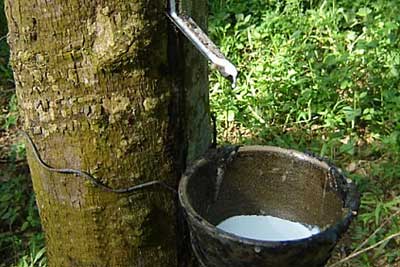21 Aug 2014 - {{hitsCtrl.values.hits}}
(1)(1)(1)(1).jpg)
.jpg) s the Ministry of Plantation Industries is promoting extension of rubber growing in the dry zone, particularly in the North and East of the country, it is important to discuss the subject of land evaluation and selection for rubber.
s the Ministry of Plantation Industries is promoting extension of rubber growing in the dry zone, particularly in the North and East of the country, it is important to discuss the subject of land evaluation and selection for rubber. The ideal annual rainfall for rubber should fall within the range of 1650 mm -3000 mm and be reasonably uniformly distributed throughout the year. Both foliage and panel diseases are favoured by high rainfall and growth and yield tend to be depressed if rainfall is low. The time required for low rainfall to influence tree growth rate and yield performance depends on the soil moisture retention properties, this may be less than one month in free draining sandy soils and upto two months in well structured clay soils which permit satisfactory root development to depth.
The ideal annual rainfall for rubber should fall within the range of 1650 mm -3000 mm and be reasonably uniformly distributed throughout the year. Both foliage and panel diseases are favoured by high rainfall and growth and yield tend to be depressed if rainfall is low. The time required for low rainfall to influence tree growth rate and yield performance depends on the soil moisture retention properties, this may be less than one month in free draining sandy soils and upto two months in well structured clay soils which permit satisfactory root development to depth.
25 Nov 2024 30 minute ago
25 Nov 2024 44 minute ago
25 Nov 2024 1 hours ago
25 Nov 2024 2 hours ago
25 Nov 2024 2 hours ago